Northern lights, moon and bright stars according to the picture
The World We Live In Has Many Beauties And Wonders. One Of These Beauties Is The Night Sky With Bright Stars And Unique Scenery That Captivates The Eyes Of Every Viewer.
There are many beauties in the heart of the night sky, such as the aurora borealis, the milky way system, bright stars, different phases of the moon, etc. Every year, an international competition or night sky theme is held, in which many photographers from all over the world participate.
In the following, we will see a collection of photos of the best photographers in the world who have captured the night sky.
Aurora Borealis over Laksvatan Fjord – Laksvatan, Norway
Aurora Borealis is one of the unique phenomena on the planet that can be seen in the polar regions. These lovely and colorful lights dance in the sky and leave a beautiful and fantastic landscape.
In the photo below, the aurora borealis dances over the sky of the city of Laxvatan, and the Milky Way can be seen on the left side of the image. This photo is a single layer, and no changes or edits have been applied. Photographer Matt Walford says of the image:
I love the aurora borealis in this photo, dancing enthusiastically over the valley; the mountains cover it from both sides like a frame.
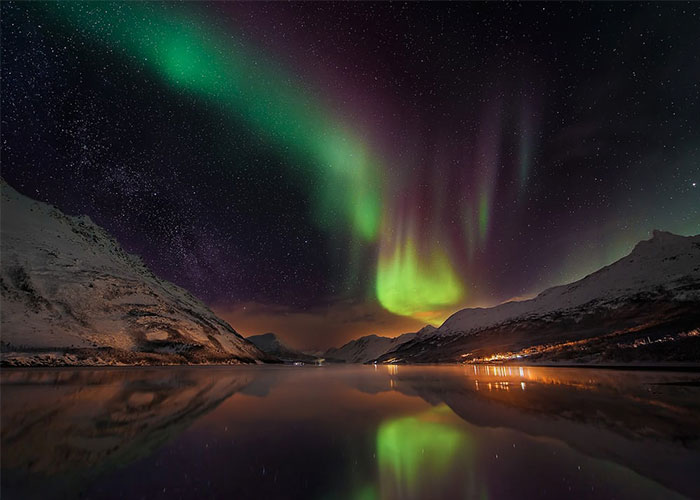
Photographer: Matt Walford – National Maritime Museum, London
Earth’s Ascent Through the Galaxies – Hilo, USA
The photo was taken from the top of Hawaii’s highest mountain, Mauna Kea, with a view of the land filled with volcanic lava. The Milky Way between the two volcanoes of Mauna Kea on the left and Hwalali on the right coincides with the horizon so that the Earth rises towards the sky.
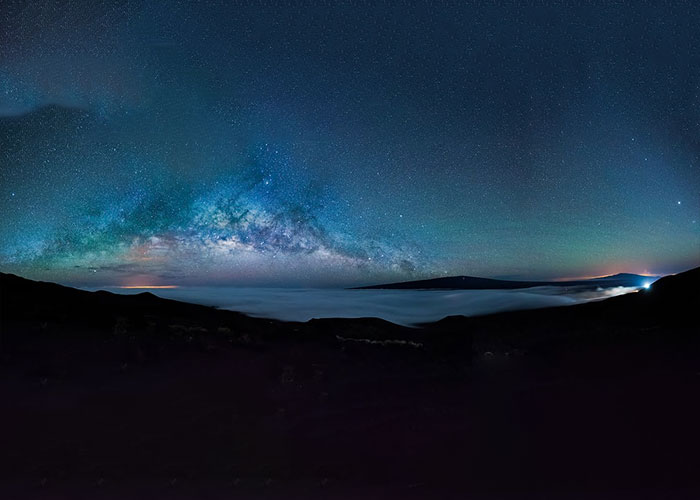
Photographer: Gianni Krattli / National Maritime Museum, London
Boats – Akaslompolo, Finland
The aurora borealis rotates in green and blue colors in the southern part of the sky over Lake Akaslompoloi in Finland, creating this unique sight. In his explanation, the photographer considered finding the right place and position to be the most challenging part of recording this fantastic view of the night sky, immersed in soft and beautiful lights.

Photographer: Marcus Kiili /National Maritime Museum, London
Memorial Stars – Memorial Valley, USA
This photo was taken during the 2015 lunar eclipse by Albert Dross. At first, the photographer planned to photograph the moon, but he failed due to the eclipse; he got a chance to snap a very dark sky. This photo is a panorama and consists of three vertical images. The country Druss lived in had a lot of light pollution, so this was the first time he had seen the Milky Way. The red light and rays in the sky are due to the beautiful atmosphere during the lunar eclipse. Albert Dross said that he would never forget this fantastic experience.
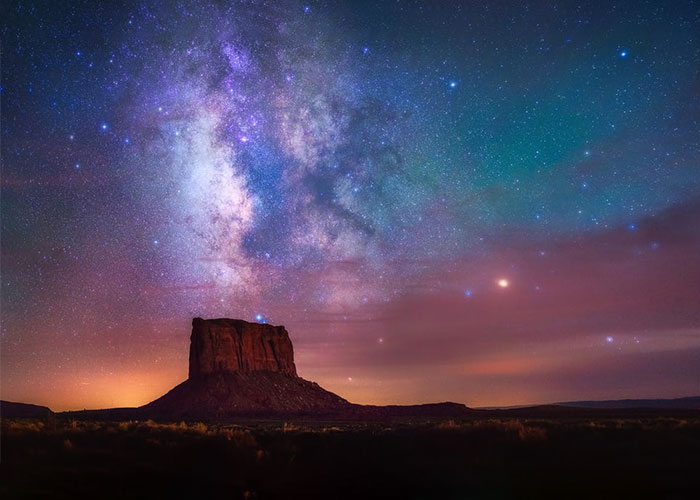
Photographer: Albert Dros / National Maritime Museum, London
Pole Star over Mount Hood – Oregon, USA
The North Star is beautifully positioned above Mount Hood and along it, and its light is symmetrically reflected on the calm and beautiful Trillium Lake. To show the Earth’s rotation and the stars’ circular path, photographer Garrett Shri used an extended exposure technique (about twenty minutes) in one position. He managed to create more beautiful symmetry in the photo.
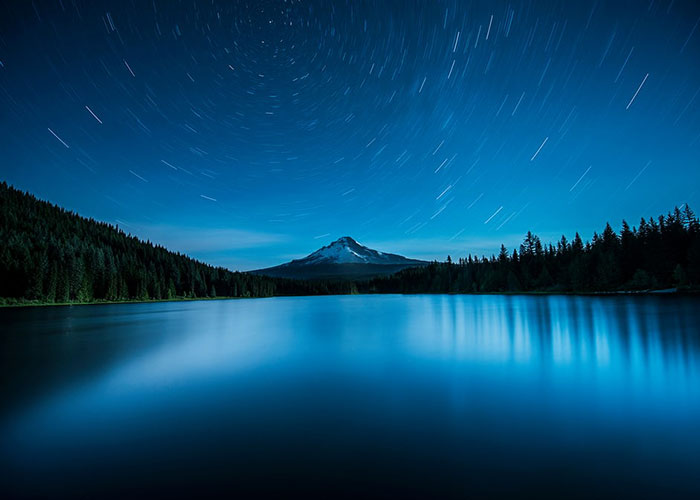
Photographer: Garrett Suhrie / National Maritime Museum, London
Great Lunar Eclipse – Boras, Sweden
On September 25, 2015, the two phenomena of the eclipse and supermoon coincided. A supermoon or supermoon is a state in which the moon is at the closest distance to the Earth, and a lunar eclipse occurs when the moon is behind the Earth, and the shadow of the Earth falls on the moon. As a result, the only light reflected through it is a different color and spectrum. It is red. In this photo of the moon, you can also see a noticeable shade of red. Due to the red color of the moon during the eclipse, it is called the blood moon.

Photographer: Peter Folkesson / National Maritime Museum, London
Horsehead Nebula – Lajoncara, Spain
The Horsehead Nebula or Bernard 33 is a dark nebula located next to the Orion Molecular Cloud and 1,500 light-years away from Earth. This nebula is a dense cloud full of dust and gas that looks like a flood and is one of the recognizable nebulae. This makes it a popular target for photographers.
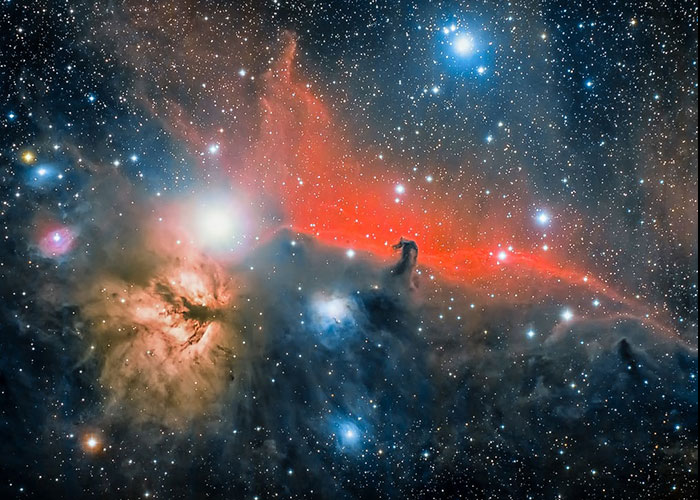
Photographer: José Jiménez / National Maritime Museum, London
Travel – La Palma, Spain
The Milky Way is curved above the Caldera de Tobrente National Park. At certain distances, lights from the islands of Tenerife, La Gomera, and El Hierro can be seen. The image was recorded with the panoramic technique and contained 18 vertical photos.
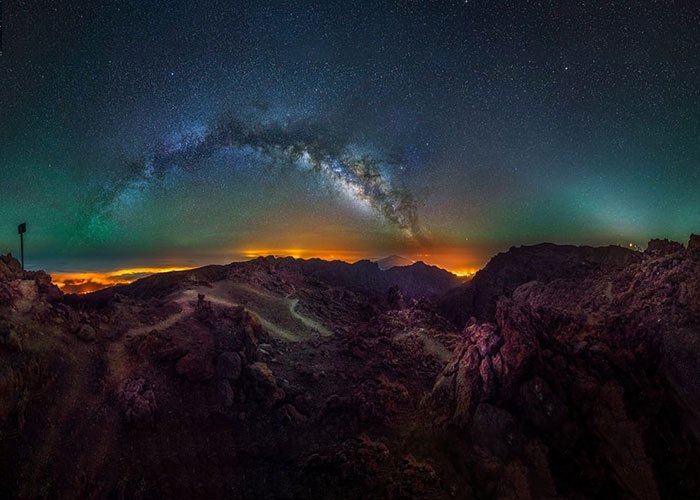
Photographer: Javier Martinez / National Maritime Museum, London
When the City Sleeps – Ennerleyton, England
The photographer of this photo has seen the aurora borealis only once before from this distance. But this view was more transparent and more beautiful than the previous view. The low clouds and the orange light created by the city of Edinburgh in the distance have begun a unique variety of color, light, and contrast in the photo. The photographer used the view of a castle on top of an old Roman hill to capture this rare image of the aurora borealis in this area of Scotland.
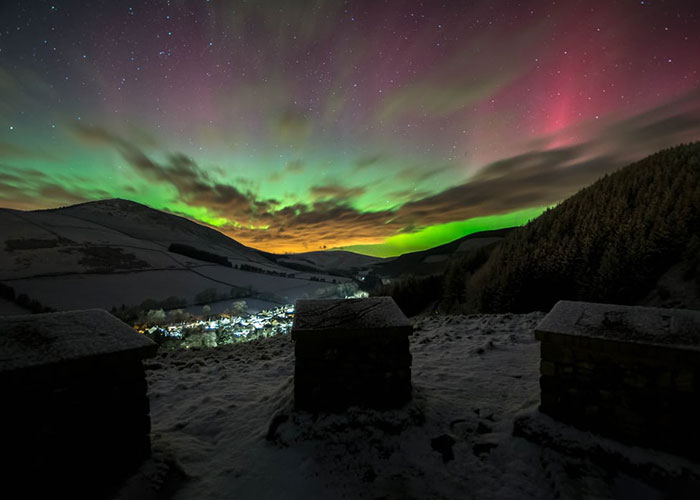
Photographer: Ross Campbell / National Maritime Museum, London
Christmas Full Moon Glow – Toronto, Canada
The thin layer of clouds on the moon has acted as a natural filter to reduce the brightness. This opportunity has been provided for the photographer to capture the moon in a colored horizon. Andrew Yee had many doubts about what kind of camera and methods he could use to take the best moonrise picture; he finally decided to do it with his eight-year-old camera and specialized techniques. In this context, luck was also very much with him to get a memorable image.
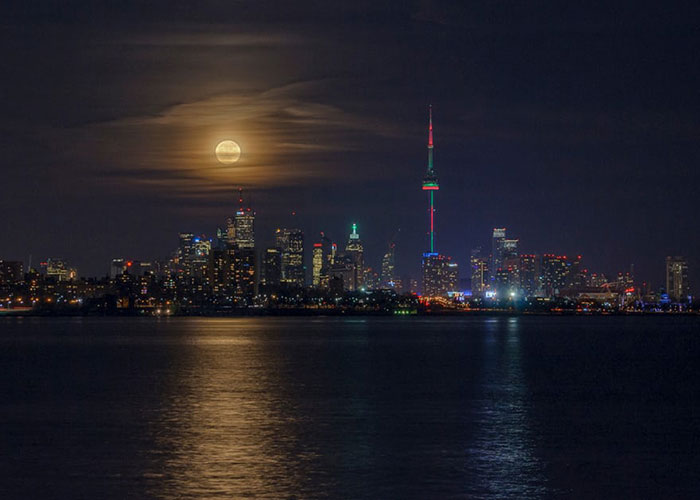
Photographer: Andrew Yee / National Maritime Museum, London











